Affiliate disclosure: This post may contain affiliate links. Please see our Privacy Policy.
Rye is an old school grain, that often tastes best with long slow fermentation.
That makes it the perfect choice for sourdough baking, where the natural sourdough culture can work its magic over an extended leavening. If you’re going to make 100% rye sourdough bread, you’ll need a rye sourdough starter as a seed culture.

Benefits of Rye Sourdough
I’m lucky in that no one in my family has a wheat allergy, and we can digest white flour without issue. What we do have, however, is a tendency toward hypoglycemia.
Feed any of us a pile of white flour baked goods, even savory loaves, and an hour later we’ll all have headaches and be ready for a nap. Whole wheat is considerably better, but whole rye is just downright nourishing without any blood sugar consequences.
When I eat rye baked goods, especially long slow fermented rye sourdough, I feel like I’ve had a satisfying, nourishing meal that will stick with me through the day.
Beyond the fact that rye is delicious and nourishing, we have another motivation for mastering rye baking… self-reliance. Growing your own grains is no easy feat in the best of circumstances, but our short northern growing season and long hard winters here in Vermont make it especially challenging.
Rye is a bit different than wheat, in that it grows without care even in the most challenging climates. Grown as the staple grain in Russia and eastern Europe for centuries, rye thrives with minimal care and survives drought, extreme cold, and pest pressure with minimal human interference. If we are going to grow our own grain, rye is our best bet for an all homestead grown loaf.
Harvesting our own native yeast from the air means we don’t have to buy any yeast either.
Rye Sourdough Starter Culture
Making your own rye sourdough starter takes about 7-10 days, and a good bit of vigilance. The first time I tried was in a fit of nesting before my daughter was born, and while my nesting ambition was high given I was several weeks past due, I was far from diligent just under 10 months pregnant. My rye sourdough starter failed and turned into a smelly mass that landed in the compost.
A few years later, my daughter is now almost 4 and she’s my little mad scientist kitchen helper. She keeps me on track and reminds me to stir our sourdough baby every few hours to keep it aerated as it develops. If you’re short on diligence or just plain busy, you can purchase an all-rye sourdough starter on Amazon, or directly from Cultures for Health and skip this initial week of tending.
Keeping an existing rye starter healthy is much easier than establishing one from scratch, and once you have an existing starter at home, it can be cultured for years if not generations.
How to Make a Rye Sourdough Starter
You can successfully grow a rye sourdough culture using just water and rye flour, but it’s much easier if you start with a slightly acidic solution to help ensure the right bacteria colonize the starter initially. Once a sourdough culture is established, it will produce acid in the starter to inhibit other bacteria. For the first few days as the sourdough starter is getting established, the culture is vulnerable to colonization by both good sourdough bacteria as well as spoilage bacteria.
Adding a tiny bit of lemon juice or citric acid at the start is one solution, as it acidifies the culture during the most vulnerable initial stage. Peter Reinhart’s book, Whole Grain Breads, describes a technique known as “the pineapple solution” which suggests using a mixture of pineapple juice and rye flour for the first two feedings as you’re developing a seed culture.
The pineapple juice has a bit of fructose which helps feed the microbes, but it’s also acidic so it helps prevent contamination from leuconostoic bacteria which can spoil a sourdough starter. We can our own pineapple when it’s cheap and in season, but obviously, we don’t grow the pineapple ourselves here in Vermont. Know that a rye sourdough starter can be made with water in place of pineapple juice in a pinch.
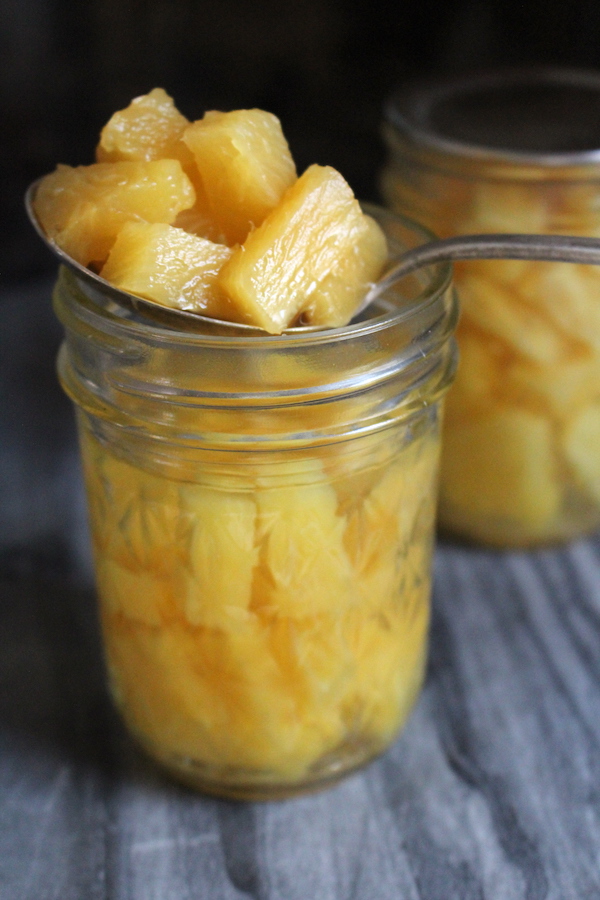
Day One ~ Rye Starter Culture
In a small bowl or glass jar, whisk together:
- 3 1/2 tablespoons Whole Rye Flour
- 1/4 cup Unsweetened Pineapple Juice (or unchlorinated water)
This should form a loose paste. Cover the container with a towel, and set it on the counter at room temperature for 48 hours. The mixture needs to be aerated regularly and must be stirred 3-4 times per day. Aeration helps ensure that the right bacteria colonize the starter, and lack of aeration is one of the main causes of starter culture failure.
Stir the mixture with a wet fork for about 1 minute. The water helps to incorporate a bit more moisture and helps counteract natural evaporation to the air. It also helps to prevent much of the starter from sticking to the fork (a little anyway).
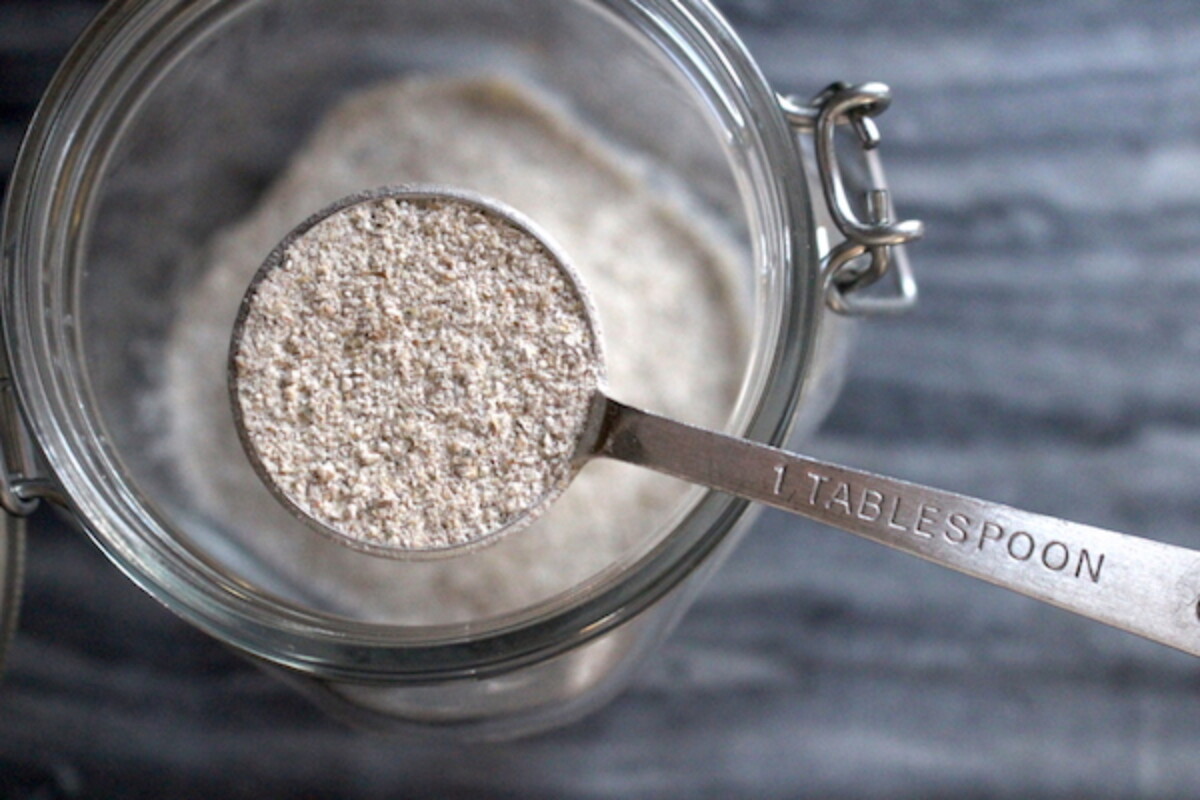
Day Three ~ First Sourdough Feeding
After 48 hours, and 6 to 8 stirrings to aerate the culture, you should see the first very tiny bubbles. You might not see any activity at this point, and if you do, they may be very small. Don’t be discouraged, that’s normal.
Either way, bubble or not, at 48 hours it’s time to feed your rye sourdough starter. Add in:
- 2 Tablespoons Whole Rye Flour
- 2 Tablespoons Unsweetened Pineapple Juice (or unchlorinated water)
Give the mixture a good stir with a wet fork and then cover it again with a towel. Allow the mixture to sit for another 48 hours, still stirring 3-4 times a day for a full minute.
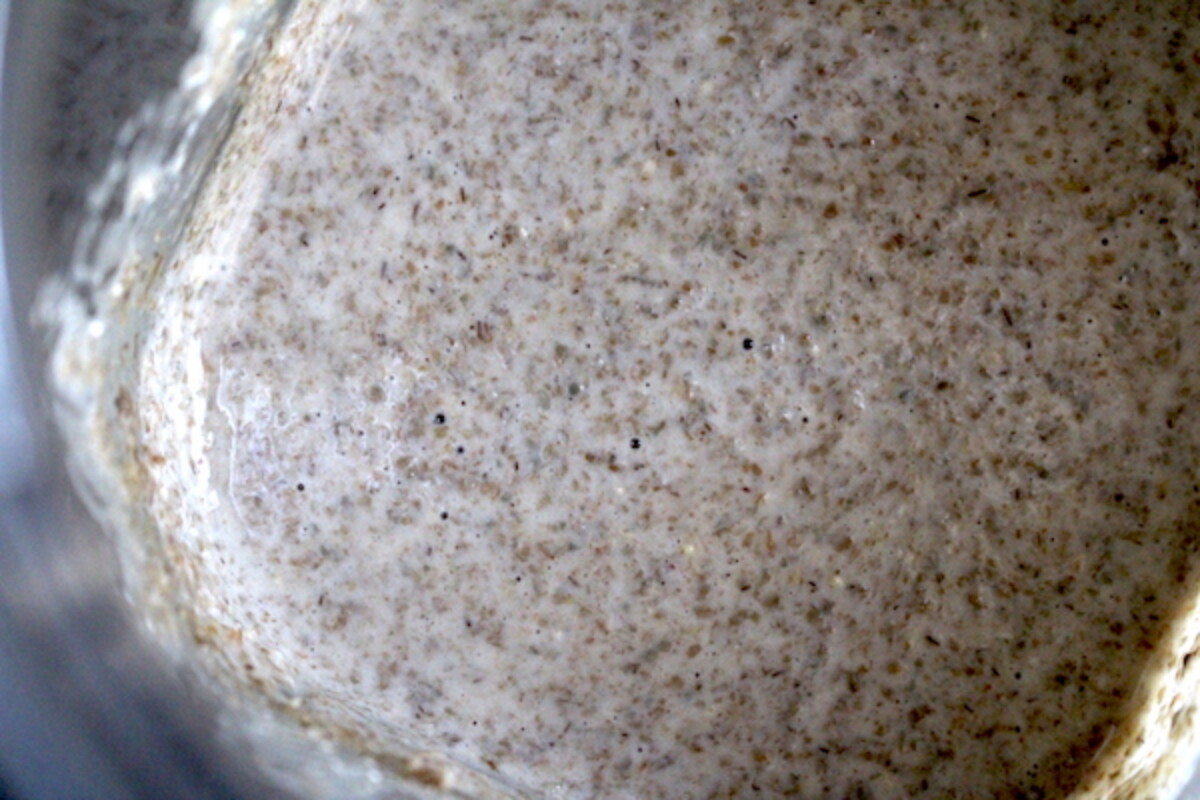
Day Five ~ Active Culture & Second Feeding
While there may not have been much activity at day 3, by day 5 the culture should be very active and full of bubbles. At this feeding, there’s no need to add pineapple juice and you can move on to adding just rye flour and water from here on out. This time, feed the starter a bit more, adding:
- 5 Tablespoons Whole Rye Flour
- 5 Tablespoons Water (unchlorinated)
Give the mixture a good stir, and set it aside for another 24 hours. At this point, you can also stop stirring the mixture and just leave it sit, covered with a towel.
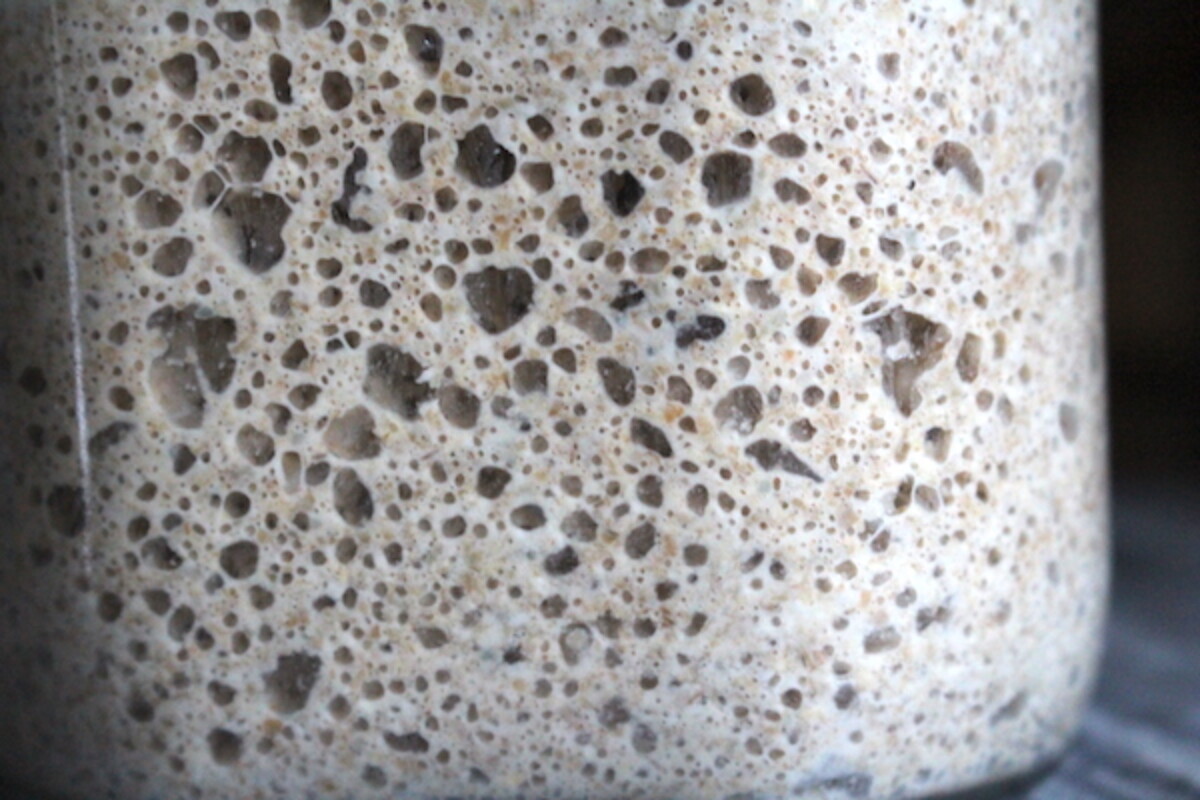
Day Six ~ First Discard
If you’ve worked with sourdough before, you know that once you have a healthy seed culture, you must either discard or use half of it with every feeding. Removing a part of the culture ensures that there’s no build up of natural yeast by-products, acids, etc, from the active sourdough culture.
This discard can be used in your first rye sourdough loaf, fed to chickens or simply composted. Either way, remove half the culture, and then add:
- 1/2 cup Whole Rye Flour
- 1/4 cup Water (unchlorinated)
Stir the mixture to incorporate.
Feeding & Tending a Rye Sourdough Starter Culture
At this point, you should have a viable rye sourdough starter culture, and it can be tended in the same way as any other sourdough. If it’s kept on the counter for daily use, discard or use about half the mixture daily, and then add in 1/4 cup water and 1/2 cup flour each day.
If you keep the culture in the refrigerator, it slows down everything and you can get away with feeding/using it just once a week.
If you need more help with tending your culture, here’s more detailed instruction on how to feed and tend a sourdough starter.
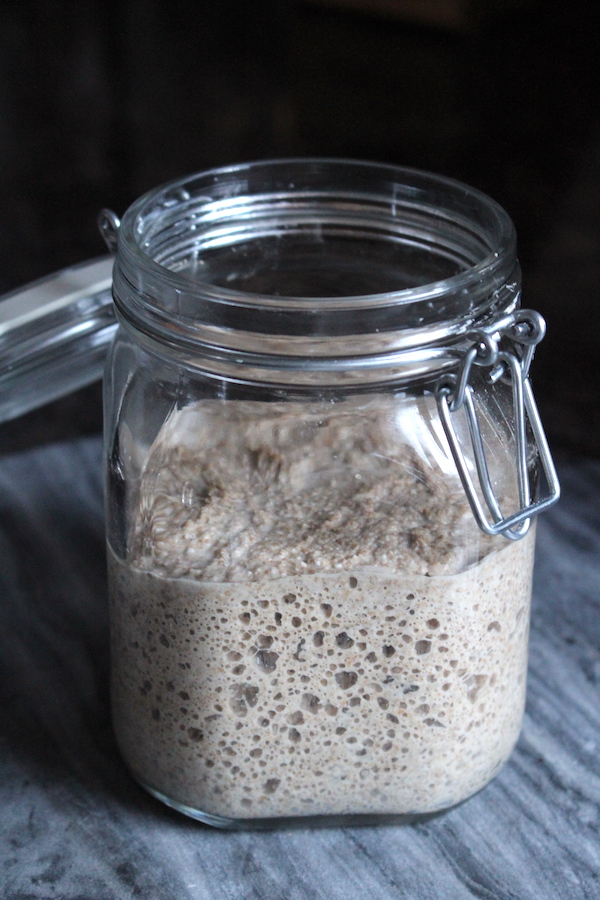
Using a Rye Sourdough Starter
So now that you have a rye sourdough starter bubbling away on the countertop, how do you use it? If you’re getting serious about rye sourdough baking, and making your own starter is a clear indication that you are….I’d suggest getting the book 100% Rye by Shannon Stronger. It has recipes for making just about everything under the sun using rye sourdough.
The first thing I made? All Rye Sourdough Waffles for my waffle loving 2 and 4-year-old little ones.
Mix 1 cup rye sourdough starter culture with 2 cups rye flour and 2 cups milk. Cover with a towel and let stand overnight. The next morning, stir in 2 eggs, 1/4 cup melted butter, 1 teaspoon baking powder and 1/2 tsp salt. Cook them in a waffle iron just like any regular waffles.
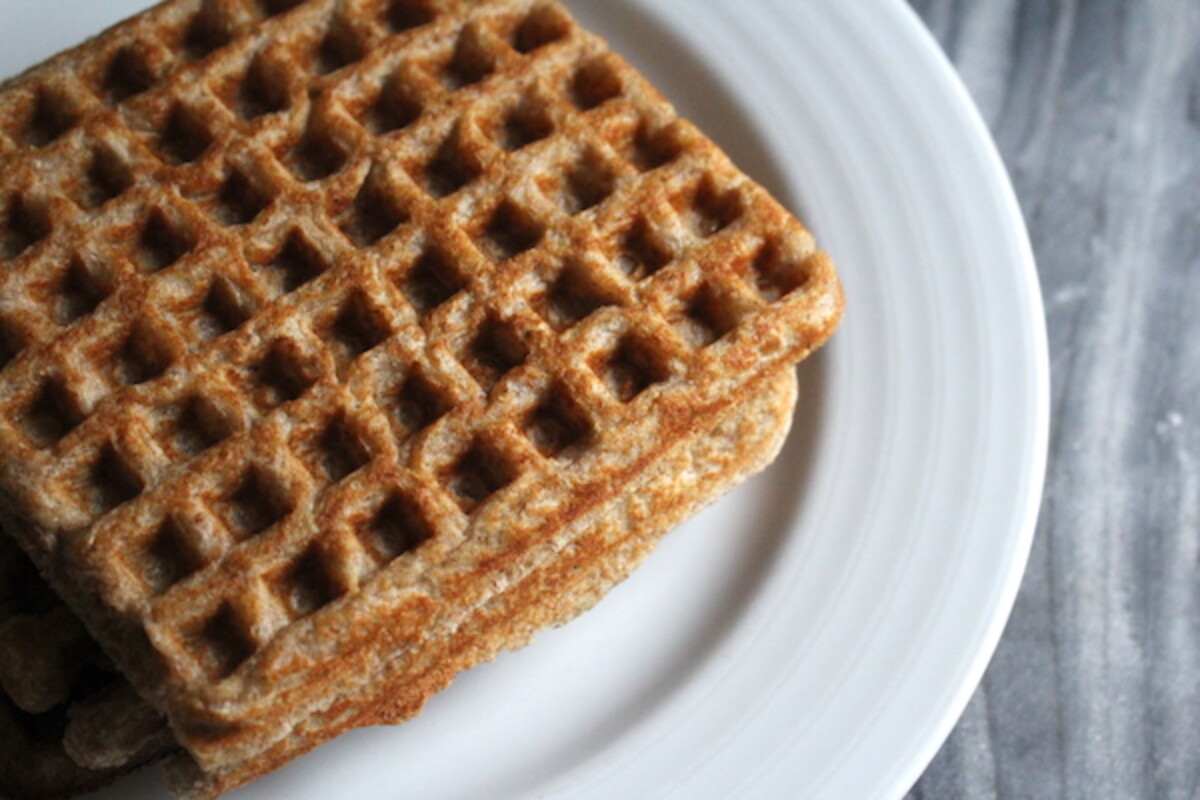
These were amazing, and completely toddler approved. They have a savory tang with the sourdough and rye, and they were delicious alone or with a small amount of homemade maple syrup. I also really enjoyed them with a bit of cider syrup (boiled cider), and the tangy fruit syrup worked really well with the sourdough rye waffle.
Lacking a Rye Sourdough cookbook, another good first recipe to try is this Rye Sourdough Boule which is 100% rye. I baked it, and it was tasty, but in the future, I’ll reduce the salt slightly and add caraway seeds.
I’m also excited about trying to make these Russian Brined Apples, which preserves whole apples for extended periods using a rye sourdough culture as a seed culture. The apples take on a unique flavor, and keep for many months in this traditional probiotic preservation method.
Are you ready to try making your own rye sourdough starter? What are you going to make first? Leave me a note in the comments.
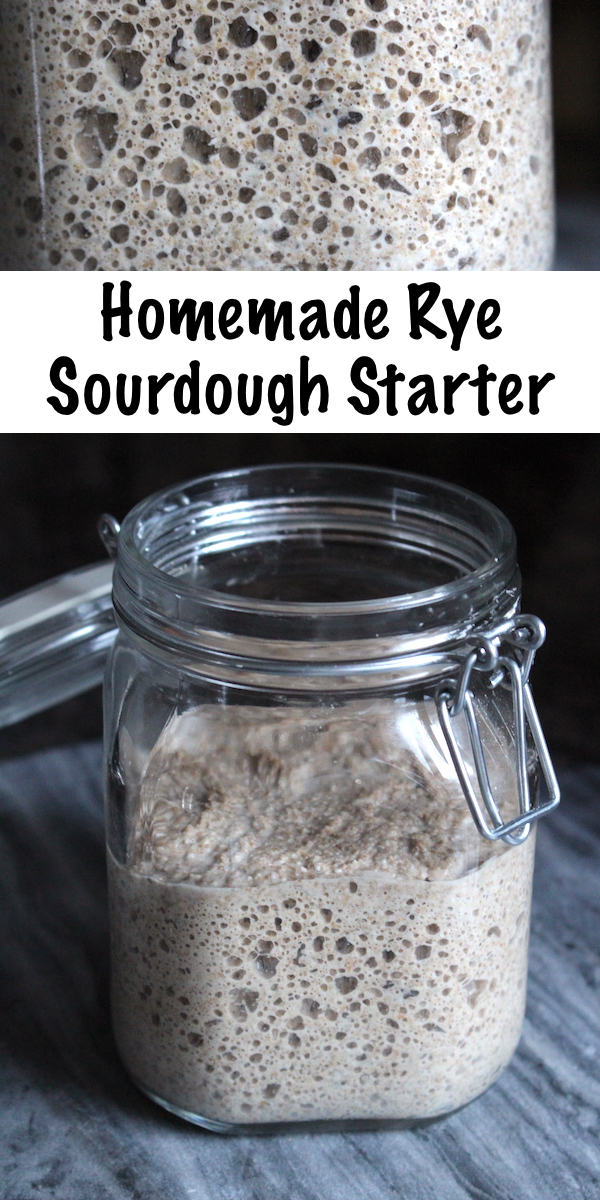














This is my third time making this starter, the first few times it went super well. This third time on day 4 and 5 there haven’t been many bubbles but instead there is hooch on the top which I’ve never had at this point in the process before. Should I just start over?
Maybe try to decrease your water amount and/or increase your flour and see if that makes a difference. I would also try pouring off some of the hooch from the top.
Can you use canned pineapple juice or does it have to be fresh?
Canned juice should be fine as long as it is just the juice and no extra ingredients or preservatives.
hello,great recipe ime going to try as a newbie,but can you please tell me if i am going to store my starter in the fridge do i completly clip down my lid or just close it loosely?,i am using a clip down glass jar lid type. many thanks..Anthony
You can clip it down or close it loosely. Either way will be fine. There won’t be much activity when it is in the fridge.
My first sourdough starter recipe has half an envelope of yeast in it… Can I feed it with rye flour? Thank you for the info
Yes you can use rye to feed any sourdough starter.
Yayyyyy! I followed your instructions to the letter & I have what looks like a successful starter! Question, how can I increase the volume of the starter? I have a couple recipes that look like they’ll use up all of this batch!
I am so glad that the starter worked for you. You can simply add in more flour and water at feeding time to increase the amount of starter.
Hi! This is my first starter ever, so forgive me if I’m just being a newbie. I’m on day 7, the starter has been nice and active. I just did my first discard and fed 1/2 cup rye and 1/4 cup water. It seems a little too thick now? Also after day seven do we continue to cover with a rag or switch to an air tight lid? Thanks so much!
I usually do equal parts of water and flour and always keep it covered with a dishtowel. If you’re not planning on using your starter for an extended amount of time, you can store it with a lid in the refrigerator for weeks or longer where it’ll reamin dormant. When ready to use again, resume daily feedings.
This is my first attempt at sourdough starter! I was excited to see bubbles on day 3, but then they disappeared after feeding and haven’t returned now that my starter is supposedly ready to use half of it. What should I do?
Have you been discarding some of the starter daily before feeding?
Just now found your rye stater recipe.
I am successfully started a Sourdough Starter, a Potato Flake Starter and an Amish Friendship Starter in the past 6 weeks.
I am wanting to make Pumpernickel Bread using a Starter.. I think this would be a good starter for this.
Do you have a recipe for Pumpernickel Bread?
Thanks so much!
MC Whelan
Sounds like you have been busy. I don’t have a pumpernickel bread recipe but it looks like a quick google search will find several. Let us know if you find a good one.
I use a sourdough starter that is 100+ years old. I’m thinking that if I just use some of it and feed it with rye repeatedly, I’ll get to pretty solid rye sourdough. It will mean keep two going, but do you see any reason why that wouldn’t work?
Should work out great, good luck!
Hi! I’m going to give your instructions a shot, I don’t have any pineapple juice but I do have lemons. You mention lemons working as well, any idea how much I would need to add as a substitute?
Thank you!
Lemon juice is a lot stronger than pineapple juice (I think?). If I were doing it, I’d maybe add 1/4 to 1/2 tsp lemon juice to every feeding that uses pineapple, along with enough water to make up the difference. A pinch of sugar to make up for the lack of sugar in the lemon as compared to the pineapple probably would help too.
I’ve been looking for a rye based starter, I am going to try this one see how it works. Thank you for posting in such detail.
hi there just found your site and I’m in love with all the information. I’m looking to buy land and be self sufficient but until we have a new place we’re practicing in our townhome. again thank yo for you site.
Hi, my starter turned out great & I was super pleased but the only problem I had was there wasn’t a complete cup let alone any left over to continue the starter. I had about 3/4 c total of starter based on the quantity of flour & pineapple juice.
Can I double the starter so I have enough for my recipe as well as some left over to continue? Or do I create two separate starters?
Thanks for the help
Tammy
Yes, you can double the amount of starter for your recipe if you need to.
Thank you Ashley. After one failed attempt at developing another starter, I’m on day six of your recipe and it looks like a winner. I have the suggested boule dough proving using my first discard. The successful starter will go on to make your waffles – they look delicious. If I keep the starter in the fridge, do I feed it before or after discard? Is the feed always 1/2 cup rye and 1/4 water irrespective of quantity discarded?
Really, you just need to be consistent with how much water and flour you’re feeding your starter with. I typically do 50g each.
This is the one Starter recipe for Rye Flour I have found to be successful! However I still have a question… I had successfully established my first starter before going on vacation. I started out feeding twice daily, but forgot to feed a second time the night before we left. The next morning I found the starter topped with black fuzz. I discarded the whole thing and am now starting again. Any input on the fuzz?
Black fuzz from one missed feeding is rough! I’ve abused mine pretty badly when life got in the way (two young kids, need I say more?), and still never had issues unless it was completely ignored at room temp for 4-5 days, or in the fridge for more than a month. Thus far, all of mine have been really resilient, so I’m sorry to say I can’t help you on the black fuzz. Maybe it got contaminated somehow and it just happened to correlate with a missed feeding? I’m sorry I can’t be more help on this one.
I plan to make those waffles after I make the starter. Thanks for sharing this recipe and the procedure for starter.
Lovely, I hope you enjoy them. They’re really good…
What if just start feeding my existing starter rye? It’s always been fed a combo of whole wheat flours that includes some rye.
Yes, you should be able to transition all (or a portion of) an existing starter to rye if you wish.
I have made sourdough starters I handful of times, and are usually all work great but I end up using them all up because of traveling or whatever. Basically no time to maintain it. I’m really excited about this sourdough starter with rye. But I was super bummed because it is not very bubbly! I did everything to the tea, and I still have a pretty flat starter. If you look through the glass on the side you see lots of active bubbles, but if you do the float test and sinks to the bottom and never rises
You are such an inspiration! My mom kept a sourdough starter for years, but I never thought of doing one with rye flour. I will have to get one started next time I have a three day weekend to be able to stir the baby. 🙂
Hooray! Spreading the sourdough love!